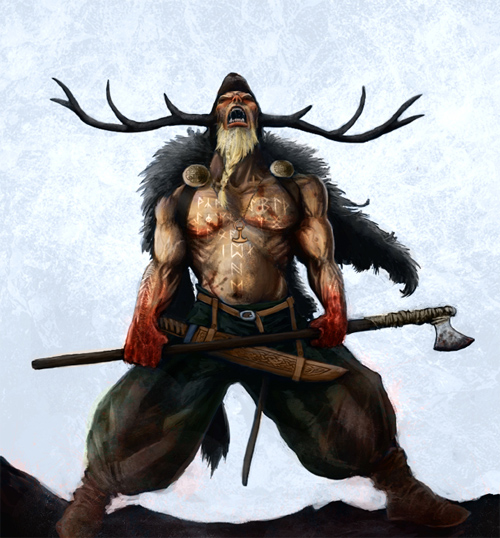Viking: The Berserkers - Official Trailer [HD]
Tornado Films
"The Viking Hunger Games!" When a clan of Viking 'Berserker' warriors terrorise Saxon youths in a ritualistic manhunt, the youths must fight back!
************
In Dark Ages Britain a group of five young Saxons are
captured by a clan of fearsome Viking warriors and used as prey in a
ritualistic manhunt. High on a potion that turns them berserk the brutal
hunters are soon on the scent of the terrified youngsters in a desperate battle
for survival. Against long odds, the captors fight back and the hunted become
the hunters.
There are so many films about Romans and Vikings, Romans
and Vikings, Vikings and Romans…. that I may have to be more selective in which I review. I review the Roman-themed films at the other blog. This
film effort was a little different, and would hold up fairly well to ‘Valhalla Rising’, and worth a review. It
was at the least, eerie, brutal, and gripping. The film opens with the words Viking Britain 835AD. Most portrayals of the Vikings tend to be negative;
however here they are truly shown as brutal murdering sadists. Actually, these
were a warrior subgrouping called the Berserkers.
The first scene shows what is described as a rural Saxon family
whose mother had been murdered by the invading Vikings, or Berserkers, and the
father was merely trying to protect what was left of his family; keeping them
away from towns and open trade routes. He is soon murdered by a Berserker
ambush. His sons, including a young man named Wade, are captured and taken to a
holding pen at their camp.
The entire film is set amid a gloomy foreboding landscape;
I assume filmed somewhere in the UK. There’s an obvious British-bias here, but
it’s just a movie right? Actually the Angles, Saxons, and Jutes were Teutonic tribes
which had invaded the British Isles, and they were originally from what is
today northern Germany, Denmark, and Scandinavia. The idea that,--as the DVD
jacket stated--"the peaceful times of Saxon Britain have been shattered by the
invasion of Viking forces” is at least somewhat deceptive. Those earlier Teutonic
invaders were very similar to the Vikings. Also, the Christians are shown to be
very peaceful; but actually they had run an aggressive campaign against the
Vikings and others who would not submit to the Christian faith. For example,
cutting them off from established trading centers.
The Berserkers chose five young individuals from the holding
pen, I think three men and two women, and released them into the wilderness to
be hunted down. This apparently was a rite to Odin, as the high priestess
called The Volva administered this blood ritual. She said to Wade before he was
released: “You have fire in your blood. Odin will feast upon your soul.” As the
chosen victims were trying to escape as
far as they could get, the Berserkers painted their faces white (later to add blood) as the wicked-looking Volva chanted. They
ingested some type of drug substance which put them into a frenzy… growling,
foaming at the mouth, and barking at the moon!
Spoiler alert beyond this point!!
.
.
.
.
.
.
As each victim was brutally killed, their hearts were cut
out and taken back to the Volva. It wasn’t always clear as to the intentions of
the various characters, but that added to this unpredictable melee. At one
point as one the victims was dying, they left some advice to her fellow prey:
“To beat the wolf, you have to become the wolf.”
The Berserkers were presented as like wild animals,
roaring and looking into the eyes of their victims as they cut their hearts
out; all the while continuing to take more of the drug substance and snarling
like wolves. They were like werewolves.
I think this was the type of film that is worth at least
one viewing in the same way as a good B horror flick. It’s different and keeps
your attention. Of course, it portrays Asatru in a negative light; “the devils
of the north” as the protagonist Wade put it. Well, someone's got to play the bad guys.
There’s also an interesting theme at the end about life, nature, and evolutionary
struggle.
.




)



